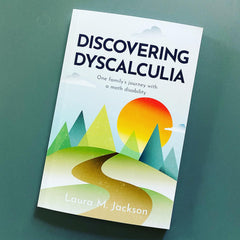“Class, you have 20 minutes to finish your work.”
For most students this would be a helpful notice. But for a particular group of students who
struggle to tell and calculate time, a statement like this would only heighten anxiety.
These students are dyscalculic.
The Impact of Dyscalculia
Dyscalculia is a learning disability which impacts the ability to grasp concepts related to numbers and amounts, including how to tell and calculate time. Numbers do not hold the same meaning for dyscalculics as they do for an average person. Children and adults with dyscalculia will struggle with mathematical concepts others seem to know intuitively or find simple to understand. Dyscalculia is a difference in the brain one is born with. It is not a result of poor education, low intelligence, or a lack of interest in math.
This disability impacts about 5% of the world’s population (about 1 out of every 20 persons is dyscalculic). Dyscalculia is a relatively new discovery and something that even most teachers are unaware of. Children and adults with dyscalculia often live with this disability without knowing why it is they struggle with numbers to such a degree.
My daughter was diagnosed with dyscalculia when she was ten years old. Before we knew about her dyscalculic mind, she experienced daily anxiety involving numbers. One of her many struggles included interpreting the clock and calculating time.
Understanding the Confusion
There are a few reasons that being told you have 20 minutes left to complete your work would be troubling for a dyscalculic learner. First, the student is unlikely to have a sense of the quantity of 20. Often my daughter will see a double-digit number as two separate numbers, so 20 can be seen as a “2” and a zero. Understanding the abstract idea of measuring time in segments is baffling to dyscalculics.
Another problem is that dyscalculic learners find it difficult to read a clock. On an analog clock they may be unsure if they are counting the space between the numbers or the numbers themselves. It is also confusing because the clock represents two separate measurements (hours and minutes) on the same circular structure. To further the complication, they must remember the quantity of each segment of time measurement, for example, 60 seconds in a minute, 60 minutes in an hour, and 24 hours in a day.
Knowing what the time will be 20 minutes from now is a calculation most elementary students can do in a quick glance at the clock. But this calculation is complicated and takes time for dyscalculic learners; they may not even know where to begin.
My daughter told me that in classroom moments like this, she would feel anxious and repeatedly check the clock. She would be so preoccupied by wondering how much time she had left that she couldn’t finish her work.
A Visual Tool for Time
One tool my daughter has found immensely helpful is the Time Timer visual timer. Even before we knew she had dyscalculia, it helped our family with activity transitions when our girls were toddlers. It has continued to be an anxiety-reducing tool even into her teenage years.
The Time Timer Visual Timer Helps Dyscalculics in Unique Ways:
Remove Unnecessary Obstacles
In my writing, coaching, and online class, I encourage the removal or limiting of any unnecessary stresses on the dyscalculic mind. The Time Timer visual timer is a valuable tool to help dyscalculics do just that.
Using this tool in daily life has greatly decreased the anxiety my daughter experiences with time. She utilizes the Time Timer visual timer when she needs to know how much time she has before we leave or how long there is to finish her homework. Like an old friend, the Time Timer sits on her bedroom dresser, ready to help whenever needed.
About the Author

Laura M. Jackson is a mom, writer, and dyscalculia advocate. She is the author of recently released book, Discovering Dyscalculia, published by GHF Press. For a limited time, you can download a free chapter of her new book at: www.lauramjackson.com/book



